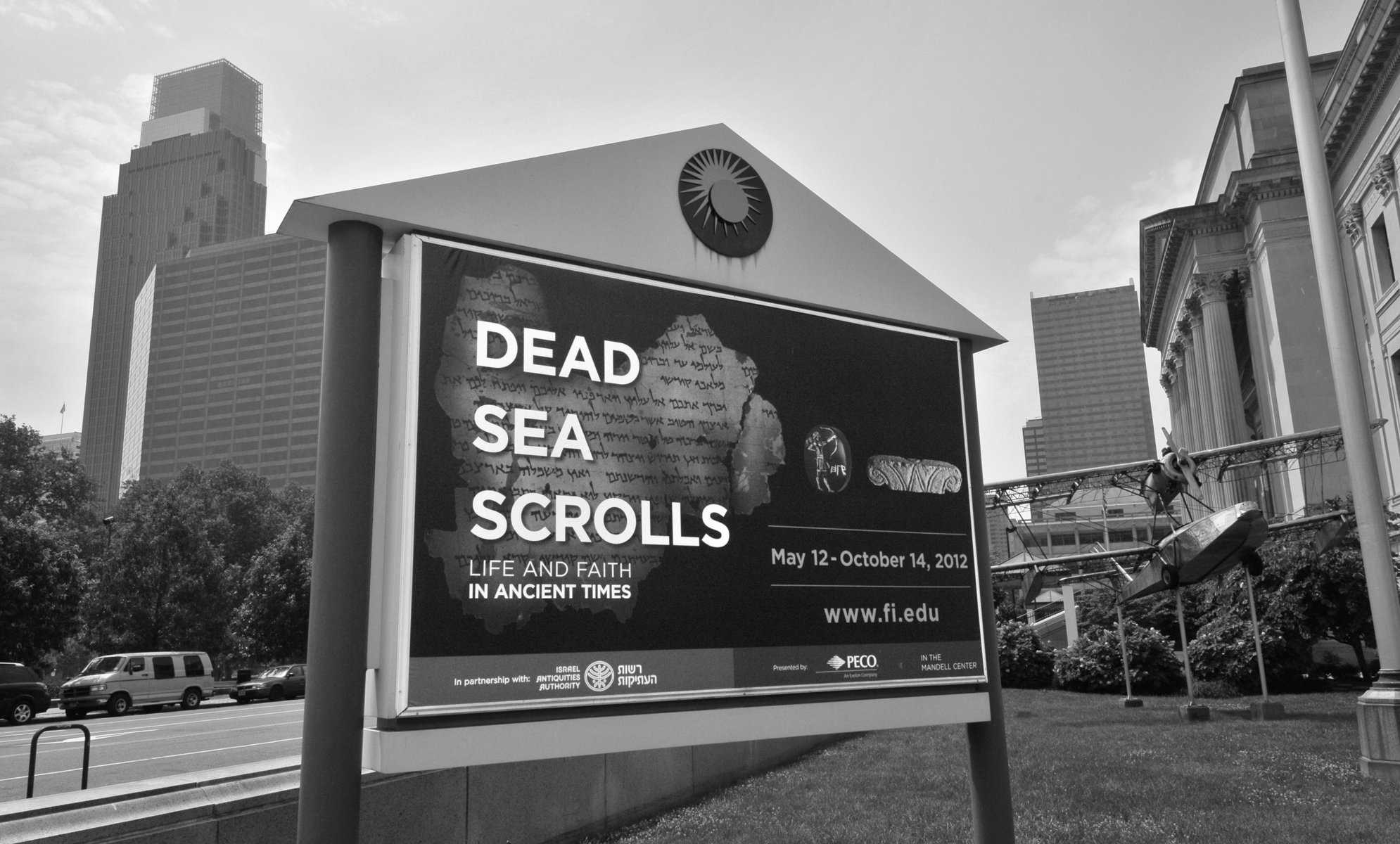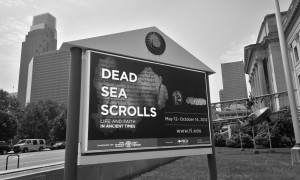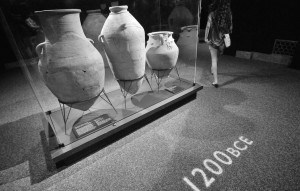On our way to take our daughter to camp, my family stopped in Philadelphia to visit relatives. As a bonus, we went to the Franklin Institute to see the Dead Sea Scrolls exhibit.
In 1947, a young Bedouin boy came across a hidden cave along the shore of the Dead Sea. Inside were ancient scrolls not seen for some 2,000 years. After years of excavations, archeologists found 972 preserved scrolls, including the earliest Biblical texts ever discovered. These are the Dead Sea Scrolls, called the most significant archaeological find of the last century.
The Franklin Institute’s Dead Sea Scrolls: Life and Faith in Ancient Times features 20 scrolls, displayed 10 at a time, including the oldest known copies of the Hebrew Bible and four never-before-seen scrolls, as well as more than 600 items…objects from everyday life, more than 2,000 years ago.
“Everything in the exhibit is Real, Real, Real,” our guide told our group. “There are no replicas.”
The tour, really a multi-media experience, begins every 30 minutes in a dimly lit room. A guide explains how the exhibit is set-up, what to expect, what to do and not do. When the guide stops her explanations, a woman chants Hebrew, as if calling the visitors to the time and place of the writing of the scrolls.
Next, we were directed through a series of halls, where a time-line took us back through the centuries to our second destination: a rather large room, where we were surrounded by sand and large screens on which videos of the Qumran Caves, where the scrolls were found, the sun rising and setting over the Dead Sea and archeologists working are shown. A live actor tells the story of the discovery, moving between the screens and describing the huge urns in the room.
We were then free to wander through the other halls and rooms to view these fascinating artifacts, some grouped as in a home, others displayed museum style. Included in the collection are artifacts such as the limestone capitals used in the architecture of the administrative centers during the first temple period (1006-586 BCE); artifacts from Jerusalem’s City of David, limestone Ossuaries from the early Roman period, a bathtub, and an ancient signature preserved for millennia on the Archer Seal.
Created by the IAA, from the collections of the Israel National Treasures, the exhibit at The Franklin Institute runs through Oct. 14, 2012.
The experience is definitely worth the time, worth the drive (just over five hours from Tidewater) and the cost of admission. Plus, the rest of the museum, while primarily geared for children, is fun, interactive, and offers plenty to learn. Admission is $31.50 for adults; $25 for children 3–11 and includes admission to the museum. Go to http://www.fi.edu/scrolls/ for more information.
by Terri Denison
Photographs by Steve Budman



